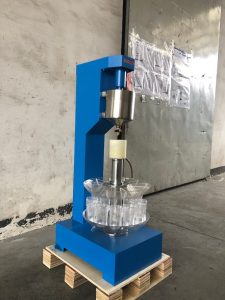This complete gravity gold process plant is to extract silver and/or gold metals from precious metal rich ore deposits. Provided here are all major equipment for a plant arranged to recover gold without any chemicals (no mercury, no cyanide). The initial “in grinding” gravity circuit will extract any coarse gold while the second stage of gravity concentration with extract the finer and final GRG gold and silver.
This simple process plant includes single stage crushing, conveying, primary grinding, spiral classification, gravity concentration, slurry pumping and bullion pour in small refinery.
With this simple flowsheet, you will recover silver and/or gold into a bullion bar.






